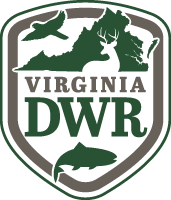By Molly Kirk/DWR
Photos by Meghan Marchetti/DWR
It’s the time of year when boaters start thinking about pulling off their boat’s cover and planning to get on the water. One of your first steps would be to make sure your boat’s registration is up to date—Virginia boat registrations need to be renewed with the Virginia Department of Wildlife Resources (DWR) every three years.
You can find the answers to a lot of frequently asked questions about boat registration and titling on DWR’s website, but we also asked Jenn Joyner of DWR’s Customer Service team for some common mistakes to avoid when completing your online registration forms. Her main message is to not rush when completing the online forms.
- Select the right type of watercraft. “Personal watercraft” refers to jet skis, not a boat. “Some people think, ‘It’s my personal watercraft because it’s my personal boat.’ So they choose PWC, or personal watercraft, which is actually a jet ski. Your 22-foot boat is yes, your personal boat, but it’s not a personal watercraft,” Joyner said.
- Be accurate in whether it’s a new or used boat. “If it’s coming from another state, it may be new to you, but not a new boat,” Joyner said. “Even if it’s new to you and to Virginia, if it’s been registered before and is a used boat, it should be registered as a used boat.”
- Make sure you list on the registration application any and all co-owners of a boat that are listed on the title or bill of sale. And if you’re adding a co-owner to a boat that has a lienholder, that lienholder must be notified of the co-owner’s addition.
- Remember to click the “save” button after adding information such as a lienholder or motor.
- Remember that the hull ID number is different than the registration number, and stays with the boat throughout its life. “The hull ID number is the 12-digit number that’s etched into the boat. It’s synonymous with a VIN on a car,” Joyner said. “The registration number can change, but the hull ID number cannot.”


